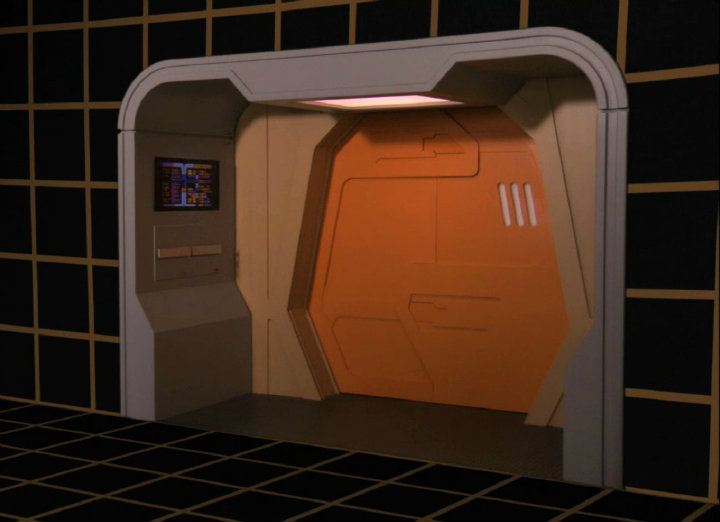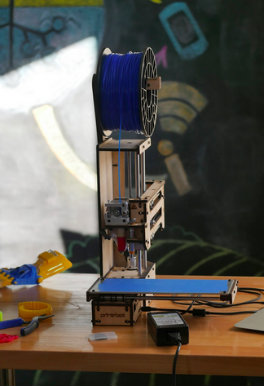As a Star Trek fan, I found the most amazing technology on the TV show to be not the ship cruising faster than the speed of light or even the life-saving tricorder: it was the replicator…or actually the “Holodeck”. These machines allowed the futuristic Starfleet crew to conjure up a real item, on command, be it Earl Grey tea or a prototype warp engine. They were able to go from idea to physical object in mere moments, with only their imaginations as the limiting factor.
Photo credit: Memory Alpha
3D printing is the closest invention to the Holodeck that we have today. The 3D printing industry has become a bit of a darling to futurologists, venture capitalists, and magic-bullet seekers aplenty—and for good reason. According to a report by the research company, Canalys, the industry is going to grow by 500% over the next five years, becoming a $16.2 billion industry by 2018. Given this estimate, it’s no wonder that 3D printing is being seen as disrupting the manufacturing industry and heralding a new industrial revolution.
And despite the hype, they might be right. There are several ways that 3D printing can change and improve lives. Here’s why 3D printing will change the world as we know it:
1. 3D printing is advancing STEM education.
I put this one first because I believe it really is the biggest and cannot be overemphasized. Education, and specifically STEM education (Science, Technology, Engineering, and Mathematics), will be the single greatest beneficiary of 3D printing technologies and investment. These low-cost, simple, and fast 3D printers offer something that remarkably few technologies do: integration and application of school subjects in an engaging way. Students, in an effort to simply make things, are teaching themselves design, programming, prototyping, iteration, and production—all without realizing it. A school in Pasadena recently acquired a 3D printer and has already experienced the collaborative and creative problem-solving it allows among teachers and students. Teachers will tell you that getting students to solve challenges and learn the skills along the way is infinitely more effective than simply working through textbook chapters in a detached and uninspired routine.
Photo credit: Southern California Public Radio
2. 3D printing adds an entirely new dimension to repairs and customization.
Repairing items with 3D printing isn’t simply about cheaply replacing a broken wall hook (though it can do that too). For much of the world, a hardware store within 200 miles is a luxury. I served as a Peace Corps Volunteer in Madagascar, and the repair and tinkering abilities of my Malagasy friends was jaw-dropping. They would build lanterns out of tomato paste cans, and once use a cigarette filter on the gas line of his car to get us home. 3D printers can level-up the capacity of these folks the world over, and in ways that we can barely anticipate.
A time lapse video of a 3D printer at TechChange’s office
3. Healthcare and prosthetics got a new sub-field.
The most obvious application in 3D printing has so far been in the field of medicine, biomedical devices, and specifically prosthetics. In the world of artificial limbs for example, 3D printers are absolutely fantastic not because they completely upend traditional prosthetics, but because they benefit from it and supplement it in really powerful ways. Whole hands, arms, casts, and splints can be customized to fit individuals and their unique conditions. This area addresses probably more than any other sector, the “why” of 3D printing.
4. 3D printing is making the manufacturing industry more competitive than ever.
With the help of 3D printing, small-scale, adaptable, and distributed manufacturing will be competitive. Really competitive. It’s not going to happen tomorrow, but it’s moving in that direction. When you start adding up the landscape infrastructure where there is greater build quality, flexibility with a greater number of materials and sizes (Shanghai WinSun Decoration Design Engineering Co, is already 3D printing houses), and all at lower costs—a model emerges that competes directly with current industries at current wages for a large number of applications. It’s altogether possible that the phone you buy in the future will come built custom for you from a machine down the block; and probably also delivered via drone (which in turn would probably also be 3D printed).
Although we are still in the early days of 3D printing, there is still so much to learn, and new printers, materials, and ideas are coming into focus everyday. This is why the timing is so critical and the opportunity so golden to be a visionary and imagine all that we can accomplish through 3D printing.
What would you request in your own Holodeck/3D printer that could solve the world’s challenges? Let us know in the comments and/or tweet us @TechChange.
Interested in learning how 3D printing can promote social good? Enroll now in this online course.








